XM for B2B order
B2B Order Experience Management
Introduction
The introduction of a system requirement document aims to provide a comprehensive overview of the project and set the stage for the detailed requirements that follow. Explain the purpose of the B2B order system management mobile application and its integration with the Erxes back office/CRM system. Define the boundaries and limitations of the project, including the functionalities covered and excluded.
Objectives
Outline the key objectives the B2B order system aims to achieve a detailed overview of the functional and non-functional requirements for the B2B Order Experience Management system. And identify and define the roles and responsibilities of the stakeholders involved in the project.
System Overview
The system overview section in a requirement document aims to provide a high-level understanding of the entire B2B order management mobile application and its integration with the Erxes back office/CRM system. This section serves as an introduction, setting the stage for the detailed requirements that follow.
🏷️Functional requirements
User Stories
Create detailed user stories that capture the interactions between users and the system. Include scenarios related to ordering products or services, managing sales, and utilizing Erkhet financial program, POS system, and other mini-programs. Features
Mobile Application
- User Registration and Authentication
- Product/Service Catalog
- Order Placement and Tracking
- Cart Management
- User Profile Management
- Notifications
Erxes Back Office/CRM Integration
- Seamless Data Synchronization
- Customer Relationship Management
- Sales Management
- Erkhet Financial Program Integration
- POS System Integration
Data Requirements Define the data entities and their relationships, including customer information, product details, order history, and financial data.
User Authentication and Authorization
- Secure login and registration processes
- Role-based access control for different users
Order Management
- Create, edit, and delete orders
- Save order as order template
Order history
- Real-time order status updates
- Integration with Erxes sales management system
Product/Service Catalog
- Product/service listing with detailed information
- Search and filter by category, price and label
- Integration with Erxes product catalog
Integration with Erxes System
- Integration with Erkhet financial program
- Integration with Erxes POS system
- Seamless communication with other plugins in Erxes
Reporting
- Generate and export order reports
- Sales performance analytics
🏷️Non-functional Requirements
Performance
- Specify performance requirements such as response time, system availability, and scalability.
Security
- Define security measures to protect user data and ensure secure transactions.
Usability
- Describe the user interface design principles and usability requirements for the mobile application.
Compatibility
- Ensure compatibility with various mobile devices and operating systems.
Reliability
- System uptime requirements
- Backup and recovery procedures
System Interfaces
Mobile Application Interfaces
- User interface design
- Navigation and user flow
- Able to filter products by price, category and other
Erxes Back Office system Interfaces
- Data exchange protocols
- API specifications for integration
Integration Requirements
API Specifications
- Detail the APIs for communication between the mobile application and Erxes back office system.
Data Flow
- Provide diagrams illustrating the flow of data between the mobile application and the Erxes system.
Testing Requirements
Test Scenarios
- Define test scenarios for functional, integration, and performance testing.
Acceptance Criteria
- Specify the criteria that must be met for the system to be considered acceptable.
Risks and Mitigation
Identify Risks
- List potential risks related to development, integration, and deployment.
Mitigation Strategies
- Provide strategies for mitigating each identified risk.
XM for B2B Sales
B2B Sales Experience Management (EXM)
Introduction
The B2B sales platform is an online solution designed to connect businesses for wholesale transactions. It will provide a centralized hub for product listings, order management, communication, and analytics.
Objectives
B2B Sales Experience Management aims to optimize and enhance the interactions, experiences, and performance across the sales journey between businesses, ensuring seamless transactions, fostering long-term relationships, and driving mutual growth. The key objectives include:
- Enhancing Customer Relationships
- Optimizing Sales Processes
- Improving Conversion Rates
- Ensuring Customer Satisfaction
- Data-Driven Decision Making
🏷️Functional requirements
- Product Listings
- Order Management
- Communication Tools
- Analytics and Reporting
- Mobile Responsiveness
Product Listings
Product Listings provide a comprehensive catalog or database of products or services offered by the B2B organization. It includes detailed information, specifications, pricing, availability, and related resources, presenting a user-friendly interface for clients or partners to browse, search, and select items of interest.
- Easy product upload for sellers with detailed specifications.
- Advanced search and filter options for buyers.
Order Management
Order Management encompasses functionalities to streamline the process of creating, managing, and tracking orders placed by B2B clients. It includes features for order creation, customization, tracking order status, managing inventory availability, handling cancellations, and facilitating seamless order fulfillment.
- Intuitive order creation and tracking system.
- Real-time inventory management for sellers.
Communication Tools
Communication Tools facilitate efficient and effective communication channels between stakeholders involved in B2B sales. It includes features such as messaging systems, chat functionalities, document sharing, video conferencing, or collaborative platforms, enabling seamless interaction, collaboration, and information exchange.
- In-app messaging system for buyer-seller communication.
- Notifications for order updates, messages, and system alerts.
Analytics and Reporting
Analytics and Reporting functionalities provide insights into sales performance, customer behavior, and operational metrics. It includes data analysis tools, dashboards, and customizable reports to track key performance indicators (KPIs), monitor trends, and make data-driven decisions to optimize B2B sales strategies.
- Comprehensive analytics dashboard for sellers.
- Sales reports, order history, and performance metrics.
Mobile Responsiveness
Mobile Responsiveness ensures that the B2B Sales Experience Management platform is accessible and functions optimally across various mobile devices (smartphones, tablets). It involves responsive design, intuitive interfaces, and functionalities tailored for mobile use, providing users the flexibility to engage and manage transactions on the go.
- Fully responsive design for optimal use on various devices.
🏷️Non-Functional Requirements
Technology Stack
- Specify the preferred programming languages, frameworks, and databases.
Security
- Implement secure data transmission and storage practices.
- Ensure compliance with data protection regulations.
Scalability
- Design the platform to accommodate future growth in users and transactions.
XM for Catering
Catering Experience Management
Introduction
The purpose of this document is to outline the comprehensive requirements for the development of a Catering Experience Management System, a mobile application seamlessly integrated with the Erxes back office system. This system aims to enhance the efficiency of catering services by providing a user-friendly platform for customers to place orders, customize catering packages, and manage events. The integration with Erxes ensures a cohesive experience by incorporating features from Erkhet financial program, POS system, sales management system, and other plugins within the B2B order application.
Scope
The scope of this document encompasses the functional and non-functional requirements, integration points with the Erxes ecosystem, order and purchase processes, and other crucial aspects necessary for the successful implementation of the Catering Experience Management System.
Objectives
The primary objectives of this Catering Experience Management System are as follows:
- Efficient Order Management: Streamline the process of ordering catering services through a user-friendly mobile application, ensuring a seamless experience for customers.
- Integrated Back Office Operations: Achieve tight integration with the Erxes back office system to leverage the capabilities of Erkhet financial program, POS system, sales management system, and other plugins, creating a sustainable and cohesive B2B order application.
- Enhanced Customer Experience: Provide customers with a personalized and customizable experience, allowing them to tailor catering orders, manage events, and receive real-time updates on order status.
- Optimized Staff Coordination: Facilitate efficient communication and coordination among catering staff, ensuring timely and accurate execution of catering services for events.
System Overview
The Catering Experience Management System will adopt a modular architecture, comprising the mobile application interface and backend components. The backend will be responsible for handling data storage, processing orders, and communicating with the Erxes back office system through well-defined APIs.
User Roles
The system will cater to various user roles, including:
- Customers: End-users placing catering orders and managing events.
- Catering Managers: Staff responsible for overseeing catering operations, managing menus, and assigning staff to events.
- Administrators: Overarching control over system configurations, access permissions, and integration settings.
Integration with Erxes
The Catering Experience Management System will seamlessly integrate with the Erxes ecosystem, tapping into the Erkhet financial program, POS system, sales management system, and other relevant plugins. This integration will enable data synchronization, ensuring consistency across the entire B2B order application.
Key Features
- Dynamic Menu Management: Catering managers can create and customize menus.
- Event Booking: Customers can book catering services for specific events.
- Real-time Order Tracking: Customers and staff can track order and delivery status.
- Financial Integration: Automatic invoice generation and payment synchronization with Erkhet financial program.
- CRM Integration: Synchronization of customer data and communication history with Erxes system.
- POS System Integration: Seamless integration with the sales management system for transaction synchronization.
🏷️Functional requirements
- Catering Menu Management:
- Event Management:
- Order Customization:
- Catering Staff Management:
- Real-time Tracking:
Catering Menu Management:
-
Dynamic Menu Creation: Allow catering managers to create, modify, and manage catering menus.
-
Menu Customization: Enable customization of menu items based on dietary preferences, portion sizes, and special requests.
Event Management:
-
Booking and Scheduling: Allow customers to book catering services for specific events and provide event details.
-
Calendar Integration: Integrate with the calendar system to manage catering schedules efficiently.
Order Customization:
-
Customizable Orders: Allow customers to customize catering orders, specifying quantities, preferences, and dietary restrictions.
-
Special Requests: Provide a section for customers to include special requests or notes for each order.
Catering Staff Management:
-
Staff Assignment: Enable catering managers to assign staff to specific events.
-
Staff Communication: Facilitate communication among catering staff for better coordination.
Real-time Tracking:
-
Order Status Tracking: Allow customers and catering staff to track the status of catering orders in real-time.
-
Delivery Tracking: Integrate with GPS to provide real-time tracking for food delivery during events.
🏷️Non-Functional requirements
Scalability:
- Scalable Menu Handling: The system should handle a scalable number of menu items and event bookings.
Performance:
- Real-time Updates: Ensure real-time updates for order status, menu changes, and event schedules.
Security:
- Data Security: Implement robust security measures to protect customer data, especially for payment transactions.
Integration with Erxes Back Office System:
Financial Integration:
-
Invoice Generation: Integrate with Erkhet financial program for automatic invoice generation for catering services.
-
Payment Sync: Ensure seamless synchronization of payment data between the catering app and Erkhet financial system.
CRM Integration:
-
Customer Relationship Management: Sync customer data, preferences, and order history between the catering app and Erxes system.
-
Communication History: Maintain a log of customer communication within the CRM system.
POS System Integration:
- Sales Transaction Sync: Integrate catering sales transactions with the overall sales management system within Erxes.
Reporting and Analytics:
-
Sales Reports: Provide detailed reports on catering sales, including popular items and revenue generated.
-
Customer Analytics: Analyze customer behavior and preferences for catering services.
Mobile Application-Specific Considerations:
User-Friendly Interface:
- Intuitive Design: Ensure an easy-to-use interface for both customers placing orders and catering managers handling event logistics.
Mobile Payment Integration:
- Mobile Wallets: Enable payment through popular mobile wallets for customer convenience.
Documentation:
Training Materials:
- User Training: Develop training materials for catering staff and administrators on using the mobile application and Erxes integration.
Support Documentation:
- Customer Support Resources: Provide documentation for customers on using the catering app and accessing support.
XM for Ecommerce
Introduction
The E-commerce Experience Management System is a comprehensive platform designed to revolutionize the online shopping experience. This system aims to provide a seamless journey for users, from initial registration to successful checkout. With an emphasis on user-friendly interfaces and diverse features, it caters to both customers and back-office personnel, fostering efficiency, engagement, and growth.
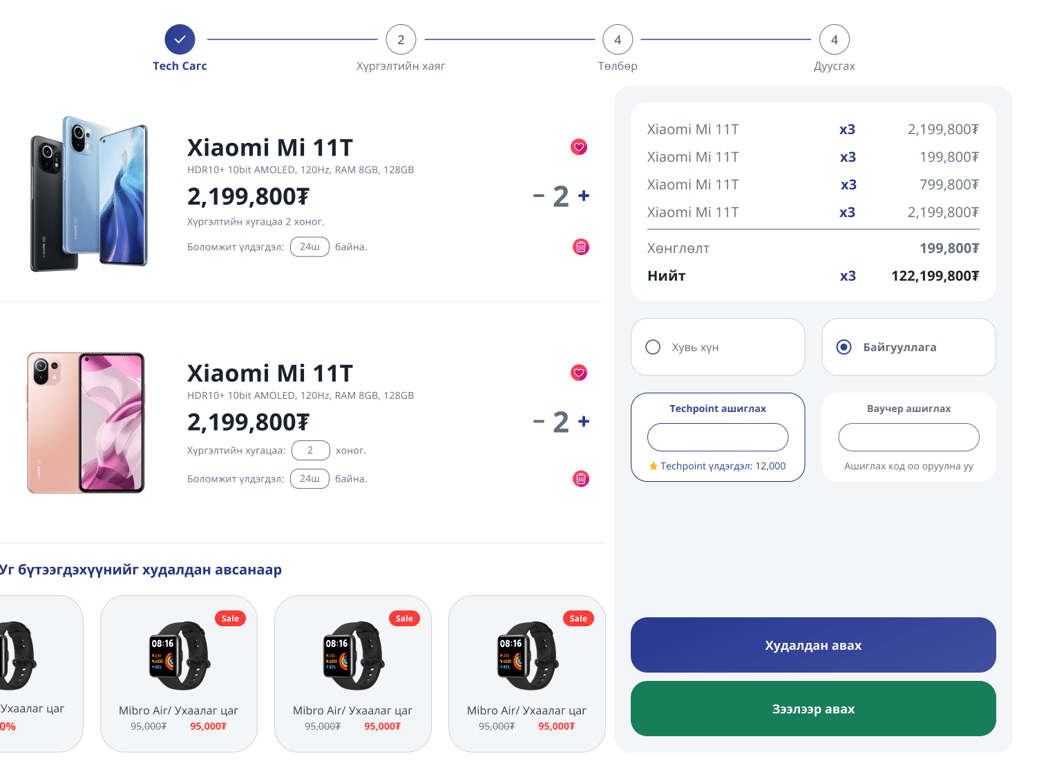
Objectives
Objectives of E-commerce Experience Management System
- Seamless User Experience
- Optimized User Management
- Diverse Payment Options
- Efficient Shopping Cart and Checkout
- Comprehensive Order Management
- Dynamic Promotions and Discounts
- Engaging Customer Reviews and Ratings
- Data-Driven Reporting and Analytics
- Efficient Inventory Management
- Continuous Improvement and Innovation
- Reporting and Analytics
- Inventory Management
- Continuous Improvement
🏷️Functional requirements
Functional of E-commerce Experience Management System:
Reviews and Ratings
Encourage user feedback with login-optional reviews, moderation, and rich media integration. Utilize aggregated reviews, verified purchase statuses, and incentivized reviews for credibility and valuable user input.
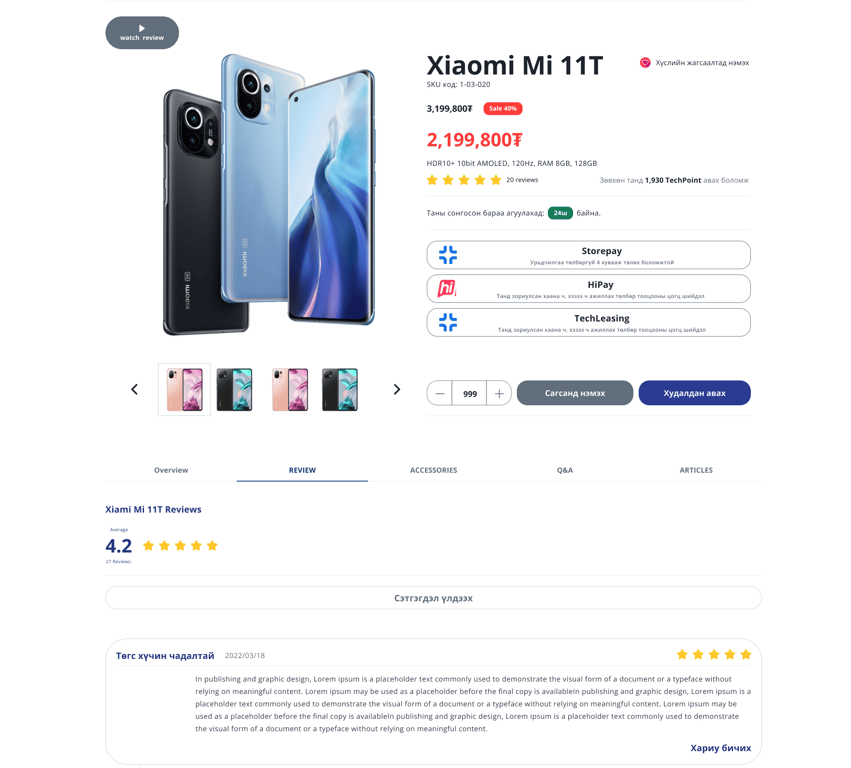
- Customer Reviews and Ratings
- Allow customers to leave reviews and ratings for products and services
- Implement a user-friendly interface for hassle-free feedback submission
- Login-Optional Reviews
- Provide the option for customers to review without mandatory login
- Enhance accessibility for users who prefer a streamlined process
- Rating System
- Implement a rating system, possibly using stars, to quantify customer feedback
- Allow users to express their satisfaction level through a visual representation
- Anonymous Reviews
- Enable users to submit anonymous reviews if they prefer
- Respect user privacy while encouraging honest feedback
- Moderation and Validation
-Implement a moderation system to ensure reviews adhere to guidelines
- Validate genuine reviews while filtering out inappropriate content -Rich Media Reviews
- Allow users to attach images or videos to their reviews
- Provide a more comprehensive understanding of user experiences
- Response Mechanism
- Allow e-commerce owners to respond to customer reviews
- Enhance customer engagement and demonstrate responsiveness
- Filter and Sort Options
- Provide users with options to filter and sort reviews
- Enhance user experience by facilitating quick access to relevant feedback
- Review Aggregation
- Aggregate reviews to provide an overall rating for each product or service
- Offer users a quick summary of collective customer sentiments
- Verified Purchase Status
- Indicate whether a review is from a verified purchaser
- Enhance the credibility of reviews by highlighting authentic feedback
- Incentivized Reviews
- Consider incentivizing customers for leaving reviews
- Encourage more users to share their experiences with the incentive system
- Integration with Customer Support
- Integrate reviews with customer support systems
- Provide a holistic view of customer feedback for continuous improvement
Order Management
Ensure transparency with unique order tracking, comprehensive order histories, and mobile-friendly tracking. Users can modify or cancel orders easily, and integrated delivery services facilitate a smooth transition from processing to delivery.
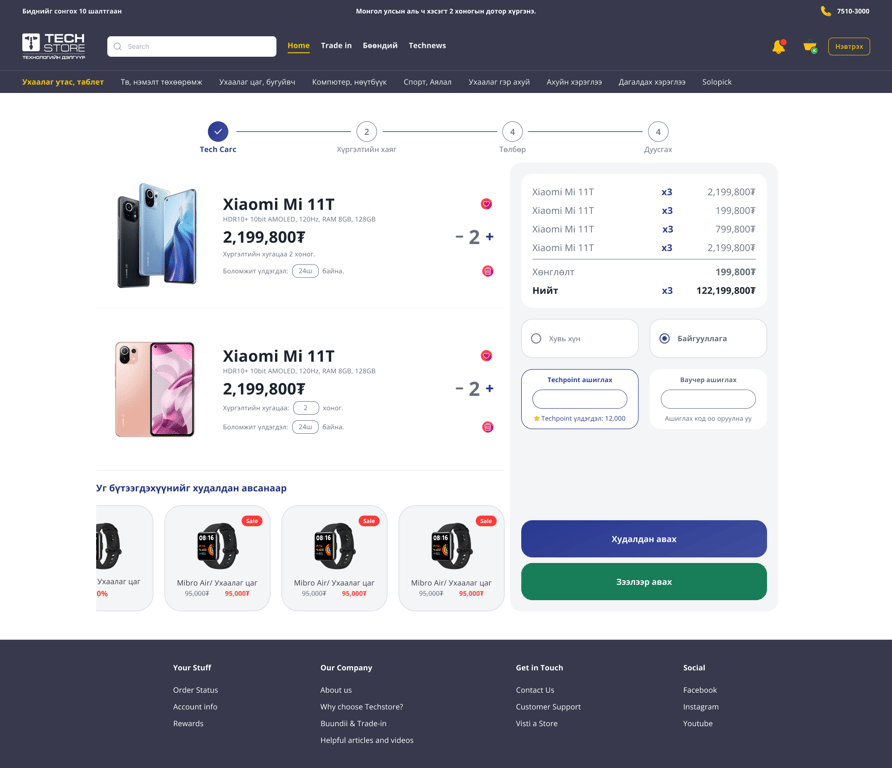
-
Order Tracking System
- Assign a unique order tracking number to each purchase
- Implement a comprehensive order tracking system for real-time visibility
-
Order Histories
- Maintain detailed order histories for user reference
- Enable users to track and review past orders effortlessly
-
Order Processing Flow
- Provide a visual representation of the order processing flow
- Keep users informed about the status of their orders in real-time
-
Status Updates for Customers
- Display order status updates, indicating key stages of processing
- Enhance transparency by communicating whether the driver has picked up the order
-
Estimated Time of Arrival (ETA)
- Include a tracking estimate for the time of order arrival
- Enable users to anticipate when their package or service will be delivered
-
Mobile-friendly Tracking
- Optimize order tracking for mobile devices
- Allow users to conveniently monitor the progress of their orders on their phones
-
Customizable Notifications
- Enable users to set preferences for order notifications
- Allow customization of alerts based on order status changes
-
Order Modification and Cancellation
- Provide users with the ability to modify or cancel orders within a specified timeframe
- Streamline the process to accommodate user preferences
-
Return and Exchange Management
- Implement a user-friendly system for returns and exchanges
- Clearly communicate return policies and facilitate hassle-free processes
-
Integration with Delivery Services
- Integrate with delivery services for seamless order fulfillment
- Ensure a smooth handover from processing to delivery
-
Customer Support Integration
- Connect order management with customer support systems
- Provide a unified platform for addressing user inquiries and concerns
-
Inventory Updates
- Reflect real-time inventory changes with each order
- Ensure accuracy in product availability and prevent overselling
-
Feedback and Reviews
- Allow users to provide feedback and reviews on their orders
- Enhance the user experience by valuing and responding to customer input
Payment Processing
Integrate with diverse payment gateways for secure, real-time transactions. Support subscription payments, multi-currency transactions, and automated invoice generation, catering to a global user base.
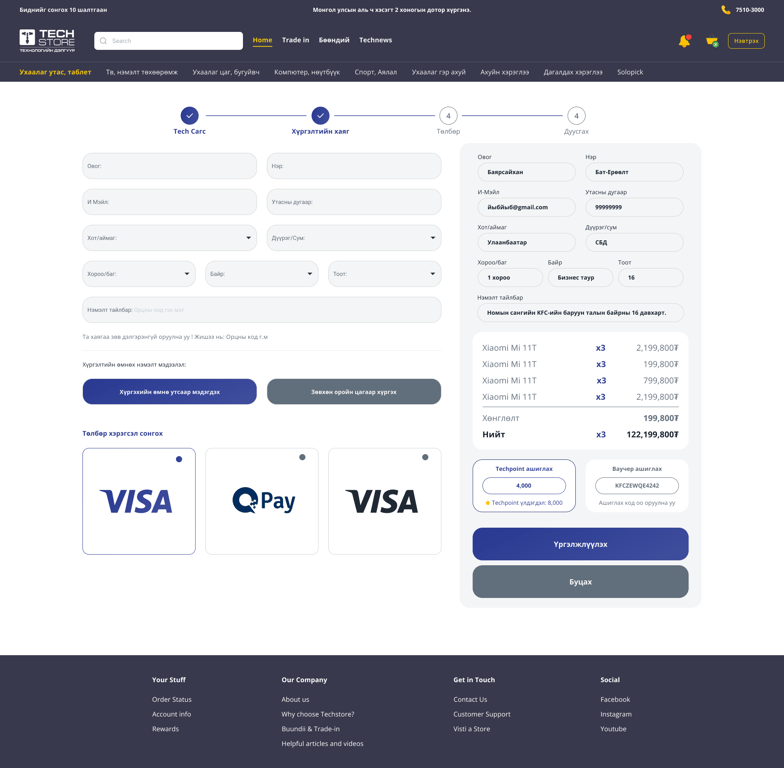
Diverse Payment Gateway Integration
- Connect payment processing with QPay, SocialPay, MonPay, PayPal, Stripe, Alipay, etc
- Offer users a range of secure payment options for flexibility
BuyNow and PayLater Integration
- Implement BuyNow and PayLater functions with solutions like Pocket, StorePay, etc
- Enhance user convenience with flexible payment choices
Secure Transaction Environment
- Ensure a secure payment processing environment
- Employ encryption and other security measures to safeguard user data
Real-time Transaction Processing
- Enable transactions to occur seamlessly and in real-time
- Enhance user experience with swift and efficient payment processing
Email Confirmation and Order Details
- Send instant email confirmations upon successful payment
- Include order details, transaction summary, and a unique order number
Transaction History
- Provide users with access to a comprehensive transaction history
- Allow easy tracking of past payments and purchases
Refund and Cancellation Handling
- Implement a user-friendly process for refunds and cancellations
- Clearly communicate refund policies and ensure transparent procedures
Subscription Payment Management
- Support subscription-based payments for recurring services
- Allow users to manage and modify their subscription preferences
Multi-currency Support
- Facilitate transactions in multiple currencies
- Cater to an international user base with diverse currency options
Automated Invoice Generation
- Generate automated invoices for every transaction
- Provide users with clear documentation of their purchases
Integration with Financial Software
- Connect payment processing with accounting and financial software
- Streamline financial management for both users and administrators
Product Management
Simplify product catalog handling with organized categories, real-time inventory control, and user-friendly interfaces. Customizable fields and visual representations ensure streamlined product management.

Product Catalog Management
- Efficiently organize and manage an extensive product catalog
- Support for a diverse range of products, catering to thousands seamlessly
Product Category Management
-
Create and maintain a structured hierarchy of product categories
-
Implement subcategories and parent categories for enhanced organization
-
Inventory Control
- Monitor and control inventory levels for each product
- Track real-time stock quantities in different locations
-
Search and Filter Functionality
- Implement a robust search mechanism for quick and precise results
- Facilitate easy filtering options for a seamless user experience
-
Visual Representation
- Include product images for a visual representation in the catalog
- Enhance user engagement through appealing visuals
-
Unit of Measurement
- Specify the unit of measurement for each product
- Ensure clarity in product specifications
-
Product Code and Order
- Assign unique product codes for identification
- Facilitate ordering based on codes for efficient management
-
Subcategories and Parent Categories
- Allow the creation of subcategories for detailed categorization
- Define parent categories to maintain a structured hierarchy
-
Additional Details (SQ and etc)
- Capture additional product details such as SQ (specifics to be defined)
- Customize fields to accommodate unique product attribute
-
User-Friendly Interface
- Design an intuitive interface for easy navigation
- Prioritize user experience with a streamlined product management system
Promotions and Discounts
Drive customer engagement with discount code management, loyalty programs, and personalized promotions. Real-time analytics on promotion performance, tiered loyalty programs, and referral rewards contribute to customer retention
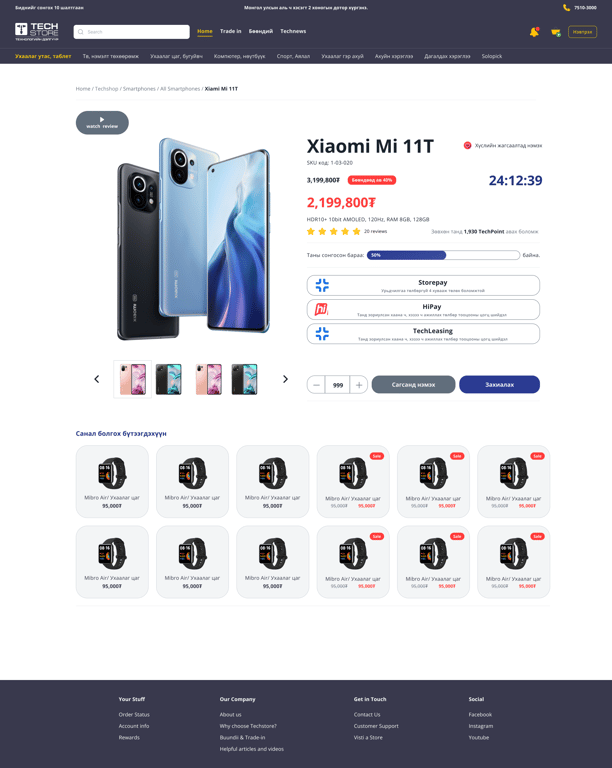
-
Discount Code Management
- Allow users to view and apply discount promo codes during checkout
- Clearly display applied discounts and their impact on the final payment
-
Flexible Promotions and Discounts Creation
- Enable easy creation of promotions and discounts based on e-commerce needs
- Provide a user-friendly interface for back-office personnel to tailor promotions
-
Loyalty Programs
- Implement a loyalty program to reward frequent customers
- Allow users to accumulate points for future discounts or special offers
-
Personalized Promotions
- Create personalized promotions based on customer behavior and preferences
- Enhance user engagement with targeted and relevant promotional content
-
Automated Discount Application
- Streamline the discount application process during checkout
- Automate the application of relevant discounts for a smoother user experience
-
Promotional Code Tracking
- Track the number of promotional codes generated by the e-commerce owner
- Provide insights into the performance of each promotional code
-
Usage Analytics
- Offer analytics on how many users have utilized promotional codes
- Provide data on the effectiveness of different promotions
-
Expiration Management
- Allow setting expiration dates for promotions and discounts
- Ensure timely and accurate management of promotional campaigns
-
Tiered Loyalty Programs
- Implement tiered loyalty programs with escalating benefits
- Motivate customers to reach higher tiers for increased rewards
-
Referral Rewards
- Include referral-based rewards to encourage customer advocacy
- Reward users for referring others to the e-commerce platform
-
Promotion Performance Reports
- Generate reports on the performance of various promotions
- Aid in data-driven decision-making for future promotional strategies
-
Integration with Marketing Channels
- Integrate promotions with marketing channels for a cohesive strategy
- Ensure consistency in promotional messaging across different platforms
Shopping Cart and Checkout
Streamline shopping with easy cart management, a user-friendly checkout process, and multiple payment options. Prioritize efficiency without compromising on security, offering a seamless end-to-end shopping experience.

Shopping Cart Management
- Enable users to add, remove, and update items in the shopping cart
- Display real-time cart updates for a seamless shopping experience
Easy Product Selection
- Implement a straightforward process for users to add products to the cart
- Include quick view options for efficient decision-making
Cart Summary
- Provide a concise summary of selected items in the cart
- Display quantities, prices, and an option for further customization
Seamless Checkout Process
- Design a user-friendly checkout interface for a smooth transition
- Minimize steps to enhance the overall user experience
Address and Payment Information
- Collect necessary details for shipping and billing addresses
- Facilitate secure payment options, supporting various payment methods
Guest Checkout Option
- Offer a guest checkout feature for users who prefer a quicker process
- Encourage easy account creation post-checkout
Order Review
- Allow users to review their order before finalizing the purchase
- Include a detailed breakdown of items, costs, and delivery information
Promo Code and Discounts
- Incorporate a field for users to apply promo codes or discounts
- Ensure transparent communication of applied discounts
Shipping Options
- Provide multiple shipping options for flexibility
- Display accurate delivery times and associated costs
Order Confirmation
- Send instant order confirmation to the user via email or SMS
- Include an order summary and estimated delivery information
User Management
Efficiently handle user registration with diverse options, secure verification, and role-based access. From profile customization to multi-factor authentication, prioritize security and engagement for a dynamic user experience.
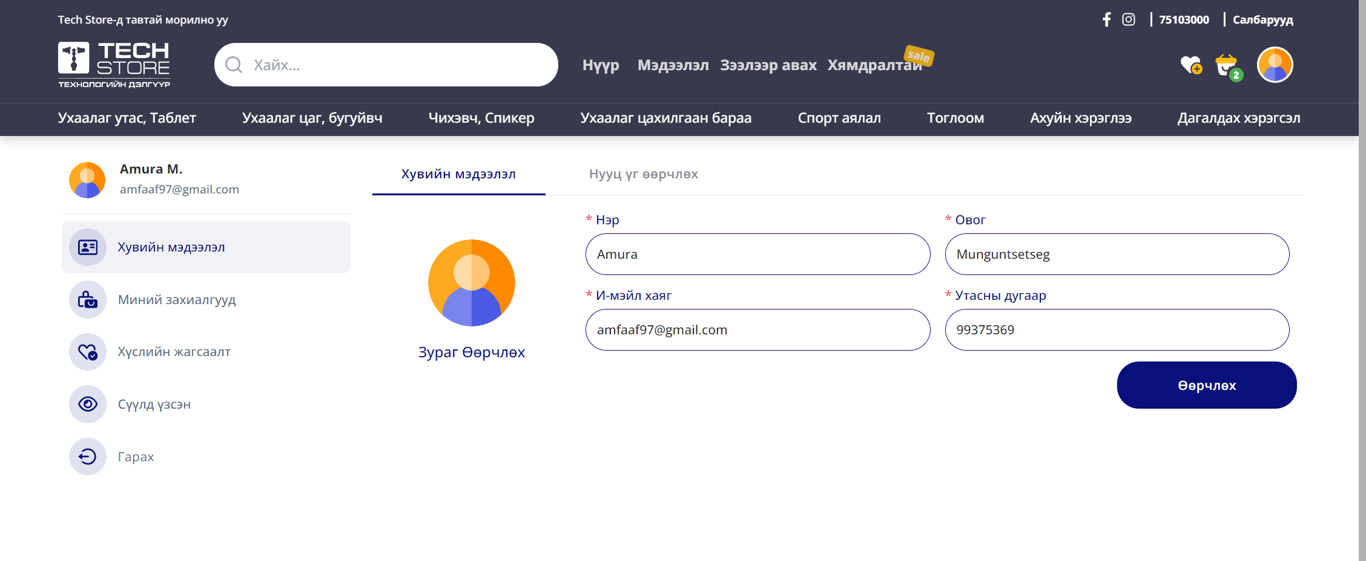
Diverse Registration Options
- Users can register through Facebook, Twitter, Google
- Alternatively, enable registration with a magic link or phone number verification
Phone Number Verification
- Users opting for phone number verification receive an OTP for secure registration
- Seamless entry of the code enhances the registration process
Email Authentication
- Users selecting email registration receive a secure link for verification
- Simplify the process with a one-click link verification method
Role-based User Management
- Define user roles, distinguishing between customers and back-office personnel
- Assign specific permissions based on roles for effective access control
Forget Password Functionality
- Include a forget password feature for easy account recovery
- Streamline the process to enhance user experience
Profile Customization
- Allow users to customize their profiles with relevant information
- Enhance personalization for a more engaging user experience
Multi-factor Authentication (MFA)
- Implement MFA options for added account security
- Provide users with choices for authentication methods
Social Media Integration
- Integrate social media platforms for seamless account linking
- Simplify the login process for users through their preferred social channels
Profile Picture Upload
- Enable users to upload profile pictures for personalization
- Enhance the visual representation of user accounts
User Activity Logs
- Maintain logs of user activities for administrative tracking
- Enhance security and transparency in user interactions
Efficient Search and Filtering
- Implement an efficient search mechanism for user profiles
- Facilitate quick access to specific user accounts
Communication Preferences
- Allow users to set communication preferences
- Optimize user engagement by respecting their communication choices
XM for POS
Point of Sale (POS) System Requirements
Introduction
The Point of Sale (POS) System is a crucial component for companies engaged in trading that directly reach end customers streamlining transactions, enhancing customer experience, and integrating seamlessly with the Erkhet financial program. This system aims to provide a user-friendly interface for sales transactions, inventory management, and financial synchronization, ensuring efficient operations and accurate financial reporting.
Objectives
The POS System will be a comprehensive solution tailored for chain manufacturers. It will include features such as order processing, payment handling, inventory management, reporting, and real-time synchronization with the Erkhet financial program. The system will be deployed across all locations to maintain consistency and facilitate centralized control.
The POS system will be a comprehensive solution designed to facilitate the entire sales process in food manufacturing establishments. Key features include:
- Order Processing: Swift and accurate order placement, modification, and cancellation.
- Inventory Management: Real-time tracking of stock levels, ingredient usage, and automatic restocking alerts.
- Payment Processing: Secure and efficient transaction processing with support for various payment methods.
- Customer Management: Customer profiles, loyalty programs, and order history for personalized service.
- Reporting and Analytics: Comprehensive reporting tools for sales, inventory, and customer trends.
- Integration with Erkhet Financial Program: Seamless data synchronization between the POS system and Erkhet for real-time financial tracking.
🏷️Functional requirements
Integration with Erkhet Financial Program
Integrating a POS system with the Erkhet financial program allows seamless data flow between sales transactions, inventory, and financial records. It ensures accurate financial reporting, synchronization of data, and compliance with financial standards or regulations.

- Real-time synchronization of sales data with the Erkhet financial program.
- Ensure consistency between POS transactions and financial records.
- Support mapping of POS categories to corresponding financial accounts.
Inventory Management
Inventory management includes tasks like tracking stock levels, automatic restocking alerts, managing product variations (sizes, colors), and facilitating efficient inventory turnover.

- Track and manage stock levels in real-time.
- Automatic inventory updates with each sale.
- Set up low stock alerts.
- Integrate with Erkhet financial program for accurate financial reporting.
Order Management
Order management includes tasks like order tracking, managing order statuses (e.g., pending, processed, shipped), handling order modifications or cancellations, and ensuring timely order fulfillment.

- Create, modify, and delete orders.
- Support for bills for splitting by amount of price or customer
- Integration with kitchen display system (KDS) for real-time order updates.
- Extended display option
- Restaurant, coffee shop, supermarket theme options are able
Payment Handling:
- Payment handling encompasses various payment methods, such as cash, credit/debit cards, mobile payments, or digital wallets. It involves securely processing payments, handling refunds or exchanges, and ensuring accuracy in financial transactions.
- Support multiple payment methods (cash, credit/debit cards, mobile payments).
- Process refunds and exchanges.
- Securely handle sensitive payment information.
Menu Management
Menu management in a Point of Sale (POS) system refers to the processes and features related to creating, organizing, updating, and managing the items or products available for purchase

- Easily update and manage menu items, including descriptions, prices, and availability.
- Support for customizable modifiers and add-ons.
Payment Processing
Integrate with diverse payment gateways for secure, real-time transactions. Support subscription payments, multi-currency transactions, and automated invoice generation, catering to a global user base.
.png)
Diverse Payment Gateway Integration
- Connect payment processing with QPay, SocialPay, MonPay, PayPal, Stripe, Alipay, etc
- Offer users a range of secure payment options for flexibility
Order Processing
Within a POS system, order processing covers activities such as capturing and processing customer orders, confirming payment, generating receipts, and initiating the fulfillment process.

- Create new orders for items with customizable options.
- Modify existing orders and add/remove items.
- Apply discounts, promotions, and loyalty programs.
- Generate order invoices and receipts.
Reporting
Reporting includes generating comprehensive reports on sales performance, inventory levels, popular products, customer trends, and other key metrics. These reports aid in strategic decision-making and business planning.

- Generate sales reports, including daily, weekly, and monthly summaries.
- Track employee performance and sales metrics.
- Export data for further analysis.
🏷️Non-functional Requirements
Performance:
- The system should handle peak transaction loads efficiently.
- Response time for transactions should be within 2 seconds.
Security:
- Implement role-based access control.
- Encrypt sensitive data, including payment information.
- Regularly update security protocols to protect against vulnerabilities.
Reliability:
- Ensure system availability of at least 99.9%.
- Implement automated backup and recovery processes.
Assumptions:
Here are some potential assumptions that could be
- Stable and reliable internet connectivity across all locations.
- Erkhet financial program APIs are stable and well-documented for integration.
Risks:
Here are elaborations on the risks you've mentioned
- Potential downtime during system upgrades or maintenance.
- Security vulnerabilities leading to data breaches.
- Resistance to change from employees accustomed to previous POS systems.
This POS System Requirements Specification is a foundation for developing a robust and efficient system tailored to the specific needs of our clients. Regular testing, updates, and training will be essential to ensure its continued success.
Integration with E-Commerce Website
In addition to the integration with the Erkhet financial program, the POS system must seamlessly synchronize with the e-commerce website for a cohesive and unified customer experience.
🏷️Functional requirements
- Online Order Integration: Ability to receive and process online orders directly from the e-commerce website within the POS system.
- Product and Menu Synchronization: Ensure consistency between in-store POS menus and the online offerings on the e-commerce platform.
- Order Status Update: Real-time update of order status (processing, out for delivery, delivered) on both the POS and the e-commerce website.
- Customer Account Integration: Synchronize customer accounts, including profiles, preferences, and order history, between the POS and the e-commerce platform.
🏷️Non-Functional requirements
- High Availability: The integration with the e-commerce website should maintain a high level of availability, minimizing downtime to ensure continuous online sales.
- Data Consistency: Ensure consistency of product information, pricing, and promotions between the POS system and the e-commerce website.
- Scalability: The integration should be scalable to accommodate increased online orders and website traffic.
Assumptions
- Stable and reliable internet connectivity for the e-commerce website and POS system.
- E-commerce platform API availability and compatibility with the POS system.
- Adequate security measures in place to protect customer data during online transactions.
Risks
- Technical challenges in maintaining synchronization between the POS system and the e-commerce website.
- Potential discrepancies in product availability and pricing between the POS and the online platform.
Integration Requirements
- API Integration: Establish and maintain secure APIs for seamless communication between the POS system and the e-commerce website.
- Regular Testing: Conduct regular testing to identify and address any issues related to the integration.
- Automatic Order Routing: Implement automatic order routing from the e-commerce website to the appropriate POS terminal or kitchen display system.
The integration with the e-commerce website is essential to create a unified and omnichannel experience for customers, allowing them to seamlessly transition between online and in-store purchases while ensuring accurate inventory management and order processing.
Retail
✏️Introduction
The purpose of this document is to outline the requirements for the development of a comprehensive Restaurant Experience Management System, integrating POS, QR menu, and e-commerce website functionalities.
✏️ Note
Can't wait to start using erxes? Get started with erxes with our Installation guide ! Try out a live demo!
Goal
The goal of a point of sale (POS) system within a business context is to streamline and facilitate various aspects of the sales process while also enhancing overall operational efficiency. The specific goals or objectives of implementing a POS system typically include:
- Efficient Transactions
- Improved Inventory Management
- Enhanced Customer Experience
- Sales Insights and Reporting
- Increased Operational Efficiency
- Integration and Scalability
Goal
The system will cover the end-to-end process of customer interaction, from ordering to payment, both in-store and online.
📈 Expected Results
The expected result of a POS system is essentially the smooth functioning and effective management of transactions, inventory, and related business operations to enhance efficiency, accuracy, and customer satisfaction within a retail or service environment.
🔧 Product Requirements
🏷️Functional requirements
User Management
- Secure login for staff with different roles (cashier, manager, admin).
- User permissions to restrict access based on roles.
Order Management
- Create, modify, and delete orders.
- Support for bills for splitting by amount of price or customer
- Integration with kitchen display system (KDS) for real-time order updates.
Extended display option
- Restaurant, coffee shop, supermarket theme options are able
Menu Management
- Easily update and manage menu items, including descriptions, prices, and availability.
- Support for customizable modifiers and add-ons.
Payment Processing
- Multiple payment methods (cash, credit/debit cards, mobile payments).
- Be able to proceed with payment considering any discounts and incentives
- Integration with payment gateways for secure transactions.
Reporting and Analytics
- Sales reports, including daily, weekly, and monthly summaries.
- Inventory management with low stock alerts.
- Sync working with financial program Erkhet directly
🏷️Non-functional Requirements
Performance
- The system should handle a minimum of 100 transactions per hour without performance degradation.
- Response time for transactions should be within 3 seconds.
Reliability
- The POS system should be available 99.9% of the time.
- Implement automated backup and recovery processes.
Security Data encryption for sensitive information. Implement role-based access control. Regular security audits to identify and fix vulnerabilities.
✏️ Note
Want to join the community?
You can join GitHub, Community forum, and Discord to share your ideas and opinions with other community members and members of the erxes team. If you're looking for news and updates about erxes, Twitter and the blog are the places to start!
Support
If you need any support during your development with erxes, you can join our Discord. You will get help directly from our core team and our community.
By joining our Discord Server, you’ll also have the chance to participate in many events and showcase your work with erxes.